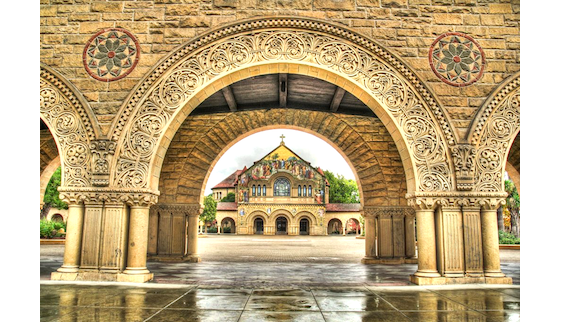
This story was first published in Friday’s Daily Post print edition. If you want to get important local news first, pick up the Post in the mornings at 1,000 Mid-Peninsula locations.
BY BRADEN CARTWRIGHT
Daily Post Staff Writer
Santa Clara County is preparing for Stanford to apply to significantly grow its campus, and while the university’s plans aren’t known yet, they are expected to be less ambitious than a proposal that was submitted and then withdrawn in 2019.
Planning consultant Geoff Bradley told the county’s Planning Commission on Thursday (July 14) that he assumes Stanford will apply to build 2 million square feet of new building space over the next 10 years. Stanford’s proposal withdrawn in 2019 sought more than 3.5 million square feet of new building space.
To get permission to build, Stanford must apply for a General Use Permit, or GUP. The GUP is guided by the county’s Stanford Community Plan, which planners are updating in anticipation of a new GUP application.
Jessica von Borck, the executive director of land use at Stanford, said the university is still looking at how to use its space. Covid has allowed more employees to work remotely, but the university still wants the ability to expand, she said.
“Our goal is always to have flexibility of choice,” she told the Planning Commission.
Planning Director Jacqueline Onciano and consultants presented a report recommending an update the Stanford Community Plan with the following rules:
• Stanford must provide housing along with new academic space. A study must set a construction timeline and proves that new academic buildings won’t make housing shortages or affordability worse.
• The county won’t accept cash payments into an affordable housing fund. Instead, Stanford must actually build the housing.
• New housing must be located on the main campus or on Stanford-owned lands in Palo Alto that are connected to the campus. At least 70% of new housing must be on campus, and the rest can go on adjacent properties.
• Stanford must put at least 30 homes on each acre of land.
• Stanford must contribute to major regional transportation improvements, like separating the Caltrain tracks from the road.
• Stanford must not increase the number of commute trips to campus.
Von Borck took issue with the county requiring Stanford to put new housing only on campus and connected lands. She said that Stanford is expanding its homeowner assistance programs to Oakland and San Jose, and more employees work from out of state.
Von Borck suggested that the county have Stanford do a study on how changing work patterns impact housing demand.
Stanford’s been buying homes
Several residents brought up Stanford’s practice of buying homes and apartments in cities for employees to live in. Pria Graves said Stanford’s purchases take away housing from the general public, and she wants the university to focus on its own campus.
Consultant Geoff Bradley said Stanford doesn’t have to pay property taxes on these purchases because it’s an educational nonprofit, so local schools lose revenue when Stanford branches out.
Stanford is currently working under a GUP approved in 2000. The university submitted a GUP application in 2016, and the county did an environmental review and held hearings with a lot of concern from neighbors.
Stanford withdrew the application on Nov. 1, 2019, just days before the Board of Supervisors was scheduled to make a decision.
Previous GUPs had no expiration, but the county is planning on having the next one last 10 years.
University spokesman Joel Berman told the Post that ongoing development of the Stanford campus in Redwood City and plans to purchase the campus of Notre Dame Namur University in Belmont don’t diminish the university’s future needs on the main campus.

The Robber Baron lives.
Puzzled about the property tax claim. I live in a house on Stanford property, and I pay property taxes just like all my neighbors.
I think, correct me if I’m wrong, that assessments of Stanford houses owned by faculty are based on the buildings not the land or the land assessments are based on the 1979 assessments since the land never changes hands. Student and graduate student rental housing is exempt from taxation.